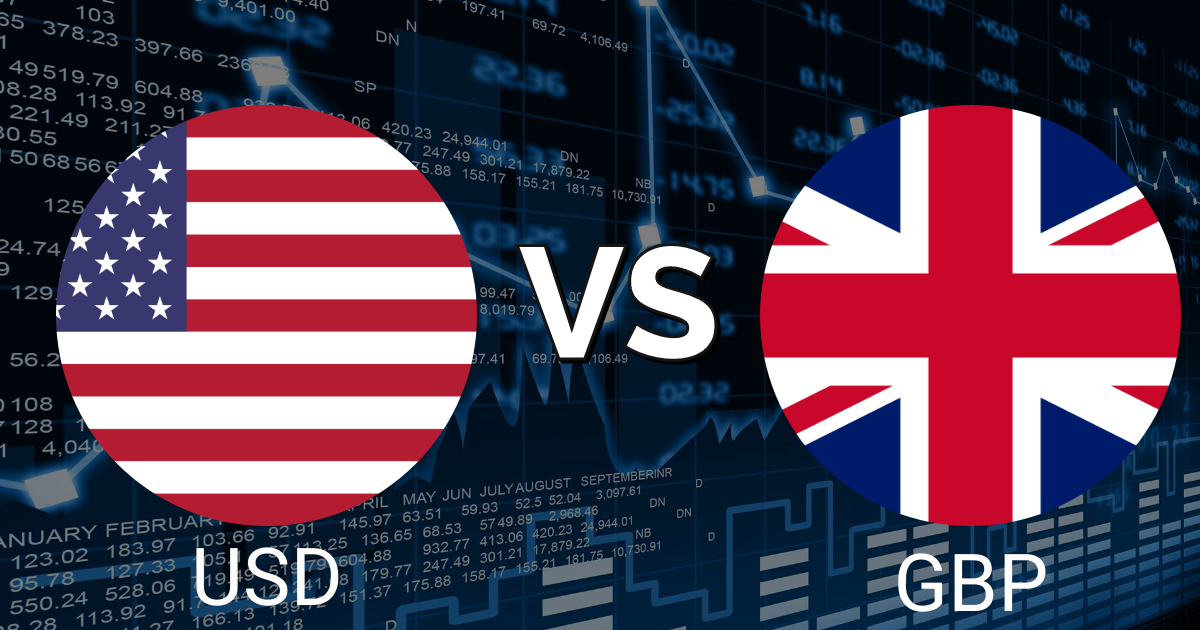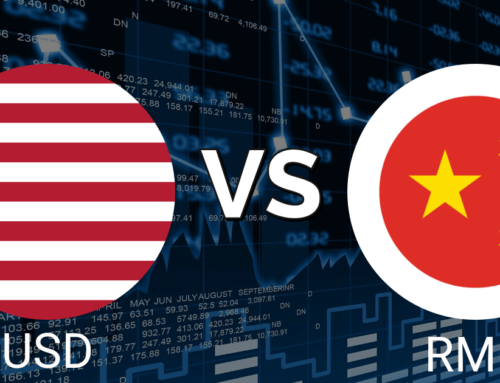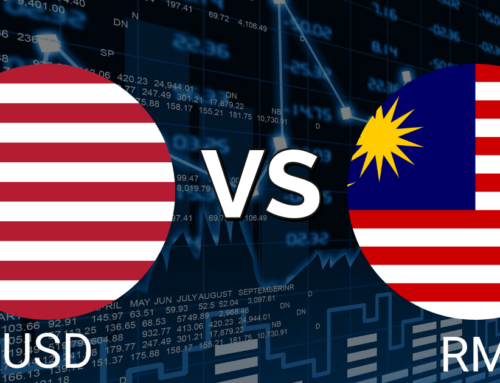
The United States Dollar and the British Pound are considered two of the most stable currencies in the world. Both these currencies were introduced in the mid-19th century, by the year 1870, both currencies had already gained the position of being one of the strongest currencies in the world.
About Pound Sterling
The Pound Sterling is the currency of the Isle of Man, Great Britain, South Sandwich Islands, Gibraltar, South Georgia and the British Antarctic Territory. It is the original money in use. It’s also known as the sterling or pound sterling and abbreviated as GBP.
The British pound is the fourth most popular currency traded on the forex market. The currencies, which include the US dollar, Japanese yen, euro, and Chinese yuan, make up a basket that assesses the IMF’s unique drawing rights (IMF).
The pound sterling is the currency of Great Britain, and it is printed by the Bank of England. The Bank of England has control over the issuance of banknotes by private banks in Northern Ireland and Scotland. Other countries’ sterling notes are not under the authority of the Bank of England.
The current GBP banknotes include 5, 10, 20, and 50 pounds. The polymer printed notes are made of 5 Pounds, 10 Pounds, and 20 Pounds. Coins come in 1, 2, 5, 10, 20, and 50 pence, 1 GBP and 2 GBP. 100 pence is equivalent to 1 pound.
History of the British Pound Sterling
The pound fell to a 30-year low on June 24, 2016, after the historic United Kingdom referendum to exit the European Union. More than $2.5 trillion in global equity values were wiped out in the days that followed the decision.
The British currency has a long and eventful history, having suffered numerous ups and downs over its 1,200-year existence. The following timeline chronicles the most significant events in the history of a currency that is still one of the world’s four most traded currencies.
Roman Era
The British pound was formed in continental Europe during the Roman era. It is so called because it is made of “pound” or “weight.” The £ sign originates from an elaborate Libra L.
Anglo Saxon Era
In Anglo-Saxon England, the pound was a unit of money as early as 775 AD, equal to 1 pound weight of silver. In the 8th century, this was a tremendous sum.
928 Era
The name “sterling” was derived from the Latin word for “royal.” The first King of England, Aethelstan, introduced sterling as the country’s official currency. To meet the growing demand, he established mints all across the kingdom.
1694 Era
King William III created the Bank of England to finance his struggle with France after England’s naval defeat at the Battle of Beachy Head in 1690. In just 12 days, £1.2 million was raised, half of this money was used to refit the navy.
1717 Era
For the first time, the United Kingdom defined sterling’s value in terms of gold rather than silver. £4.25 per fine ounce was the official gold price set by Isaac Newton, Master of the Mint, which endured for two centuries, except during the Napoleonic Wars, when payments in gold were halted.
1800’s Era
When Germany switched to the gold standard, it signaled the start of mass international commerce for the first time. The goal was to back the money in circulation with the same amount in real gold reserves.
1914 Era
The United Kingdom abandoned the gold standard in 1914 to help its military efforts. During World War I, the country borrowed large amounts of money and experienced significant inflation. At the end of the war, it had to significantly devalue the pound. £1 = $4.70 in today’s currency.
1925 Era
In 1925, Winston Churchill restored the gold standard at the pre-war rate of £4.86 per dollar. $4.86 equals £1.
1931 Era
The pound plummeted severely after the United Kingdom abandoned the gold standard in 1931. £1 was worth $3.69.
1934 Era
In 1933, the United States devalued the dollar and the pound rose to its peak. £1 was worth $5 at that time.
1940 Era
During World War II, the British government decided to link the pound’s value to the dollar when its value fell by more than 20%. £1 was worth $4.03 in today’s money.
1967 Era
A 14 percent drop in the value of the British pound prompted an economic crisis that necessitated a pound devaluation by more than 14%. £1 is now worth $2.40.
1971 Era
The British pound was allowed to float freely in 1971, along with several other currencies. Market forces were given preference over artificial pegs as a result of this decision. In 1990, the United Kingdom considered attaching the value of the British pound to the deutsche mark, but they quickly abandoned this idea. The European Union’s common currency, the euro, was introduced in 2002. Instead of adopting it, the United Kingdom kept GBP as its national money.
British Monetary Policy
The Bank of England is authorized by the British government to manage the supply of money and set monetary policy for the pound sterling. It controls the issuance of banknotes in Wales and England, as well as their circulation, via seven approved banks in Northern Ireland and Scotland.
The Royal Mint, a state-owned corporation under the direction of the Treasury, produces all UK coins and those of other countries. The Royal Mint, which is owned by the Treasury, is an autonomous organization.
The Bank of England does not govern the Jersey pound, the Manx pound, or the Guernsey pound in the Crown Dependencies of the United Kingdom. However, the islands’ national governments maintain a fixed exchange rate, and the Bank of England’s notes are in use on the islands, creating a one-way legally recognized currency union.
USD News
- EUR/USD: Macro And Geopolitics Align For A Downside Breakout - Seeking Alphaon November 23, 2024 at 3:20 am
EUR/USD: Macro And Geopolitics Align For A Downside Breakout Seeking Alpha
- US Dollar Crushes Euro, Yen, Canadian Dollar, other Currencies as Fed Backpedals on Pace of Rate Cuts - WOLF STREETon November 22, 2024 at 11:37 pm
US Dollar Crushes Euro, Yen, Canadian Dollar, other Currencies as Fed Backpedals on Pace of Rate Cuts WOLF STREET
- Metal Machining Market to Expand by USD 18.43 Billion (2024-2028), Driven by Rising Demand in Oil and Gas Industry, Market Evolution Powered by AI - Technavio - Victoria Advocateon November 22, 2024 at 10:40 pm
Metal Machining Market to Expand by USD 18.43 Billion (2024-2028), Driven by Rising Demand in Oil and Gas Industry, Market Evolution Powered by AI - Technavio Victoria Advocate
- USD set for top-five showdown with NDSU in Vermillion - KELOLAND.comon November 22, 2024 at 10:39 pm
USD set for top-five showdown with NDSU in Vermillion KELOLAND.com
- Bitcoin Price: BTC Live Price Chart, Market Cap & News Today - CoinGecko Buzzon November 22, 2024 at 9:34 pm
Bitcoin Price: BTC Live Price Chart, Market Cap & News Today CoinGecko Buzz
GBP News
- 836-pound ‘cursed’ emerald worth $1bn must return to Brazil, U.S. judge rules - MSNon November 23, 2024 at 3:14 am
836-pound ‘cursed’ emerald worth $1bn must return to Brazil, U.S. judge rules MSN
- 836-pound ‘cursed’ emerald worth $1bn must return to Brazil, U.S. judge rules - MSNon November 23, 2024 at 2:49 am
836-pound ‘cursed’ emerald worth $1bn must return to Brazil, U.S. judge rules MSN
- 836-pound ‘cursed’ emerald worth $1bn must return to Brazil, U.S. judge rules - Yahoo! Voiceson November 23, 2024 at 2:31 am
836-pound ‘cursed’ emerald worth $1bn must return to Brazil, U.S. judge rules Yahoo! Voices
- FTSE 100 Live: Pound Hits Lowest Since May, Retail Sales Disappoint - Bloombergon November 23, 2024 at 2:02 am
FTSE 100 Live: Pound Hits Lowest Since May, Retail Sales Disappoint Bloomberg
- Scott Bessent: Trump’s new treasury pick who made fortune helping George Soros bet against pound - The Telegraphon November 23, 2024 at 1:13 am
Scott Bessent: Trump’s new treasury pick who made fortune helping George Soros bet against pound The Telegraph


